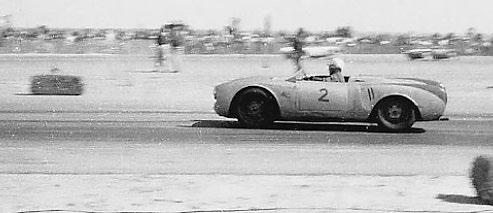
12 minute read
Rearview Mirror
POC HistoryIn The Rearview Mirror
By Don Kravig, Precision Motion
Last month, we promised a journey through some of the famous race tracks the POC has competed on in the past that no longer exist. For those of you who visited Auto Club Speedway at what may be our last official event 3 weeks ago...you know just how much fun high speed banking is. There is no feeling quite like coming in at high gear at full throttle, setting up for the corner and letting the drift at the exit catch you, hopefully just before the wall. All this without ever lifting!!! I will never forget my first shot at banking at old Ontario Motor Speedway in 1973. But before we go there, let’s go way, way, way back. As most of you know the POC was founded in 1955, and is the oldest Porsche based car club in North America, and for all I know perhaps the whole world. The first couple of years featured monthly get togethers and guest speakers such as Phil Hill, Richie Ginther, Scooter Patrick, Davey Jordan, and many other well known pros at the time. By 1957, the early Porsche racers were competing at Paramount Ranch, Santa Barbara Airport, Pomona and many other local venues which were all basically public roads that were set up with hay bales and snow fencing to provide a race course. Our oldest living member, Michael Hammond (The Legend) recalls a race at Pomona that drew 30,000 spectators. And oh, by the way he was shunted off by Ken Miles (of Ford vs Ferrari fame) in that race. So maybe we should go even further back and just describe the sport as it was originally founded. Road racing in the 50’s was just that, racing on public roads, as there were no “purpose built” venues at that time. The most famous of these races was probably the Pebble Beach race through the Del Monte Forest using part of the 17 mile drive. This race drew virtually every famous driver of the time, and massive quantities of spectators.
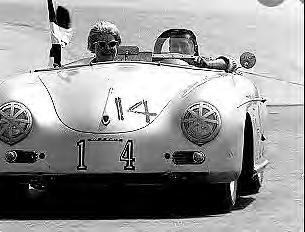
Photos: Don Kravig
PHIL HILL in a Porsche 550 Spyder
DAVEY JORDAN in a Speedster
RICHIE GINTHER in a 914-4
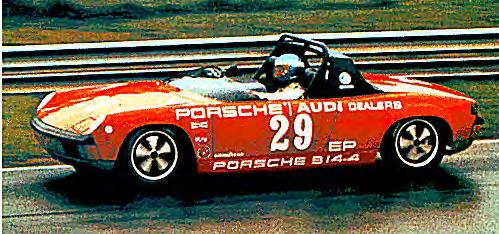
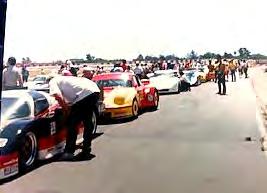
And, indirectly led to the purpose built venues of modern time. Again, let me reiterate that these races were held on public roads, sometimes with snow fencing, lined with hay bales, and it was not uncommon for spectators to run back and forth across the road during the race. The 1956 Pebble Beach race ended with a fatality to driver Ernie McAffee (and
POC at Laguna Seca c.1977 Michael Hammond, “The Legend” was there at that race). This tragedy led to the end of open course road racing, and the beginning of purpose built road courses such as Laguna Seca, Riverside Raceway and Willow Springs, which were all built in the late ‘50s.
Let me recommend a wonderful movie which covers this era in our sport, produced by our member Rick Knoop, “Racing Through the Forest” https://youtu.be/ eXMkn4EmlKQ . This movie covers the Pebble Beach races from 1950 to 1956, and is an homage to the early days of our sport and a paean to the values that it brings, specifically family. Rick Knoop is well known for a 30+ year professional career, in IMSA, Trans Am, Grand Am and even Nascar, competing in 934s, Kremer 935s and most famously the 962, and he occasionally still competes with us in the tribute to Le Mans. Now let’s jump forward in time to 1973 and the POC circuit. The typical year in 1973-1974 would have at least one visit to Ontario Motor Speedway, two to Riverside International Raceway, one to Phoenix International Riverside Raceway Hot Pits c. 1983 Raceway, one to Las Vegas, one to the old
Orange County Raceway road course, one in Holtville ...and at least one or two events at Willow Springs which is now our home course.
Riverside Raceway was constructed just north of the Old March Air Force Base, in 1957. Among other things, it featured 140 mph banked turn 9, 5th gear esses,
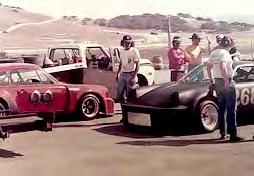
and 4400 ft downhill straight away (217mph in a 934, ask me how I know). Virtually every famous racer from the late 50’s to the late 70s and 80s competed there. The inaugural Riverside Grand Prix was won by Phil Hill driving a Porsche. As you know, he was also the first driver to win Formula One in a Porsche. Riverside had 3 basic configurations, the 2.5 mile short course which included turn 7 and 7A, the 2.5 mile Nascar course which skipped 7 and 7A and went directly from turn 6 to 8, (Nascar boys did not want to have to turn both right and left). :) And, the Can Am course which was 3.5 miles, and included all the turns. A great video of the short version of this track can be downloaded from the beginning of the Chuck Norris movie “Good Guys Wear Black”, driving an RSR making a hot lap https://youtu.be/4Sci2AYbWuI .
POC Members in Turn 7 at Riverside
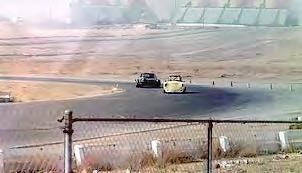
Riverside International Raceway
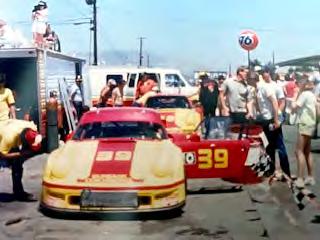
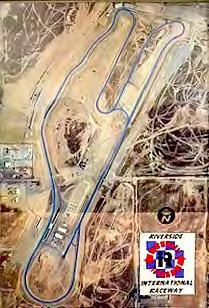
Riverside Raceway Paddocks c. 1984
As you can see from the aerial photo, Riverside was built to be a foot-to-the-floor kind of track. From the exit of Turn 9, through the uphill Turn 1, the blind right hand Turn 2 leading into the esses you had your foot flat to the floor in the highest gear available. The braking area was in the uphill entrance to Turn 6, and if you could imagine a straight shot into the uphill portion at Willow Springs, Turn 3 at 120 plus mph, you would have some idea of how it was. From Turn 6 you had elevation changes both up and down through Turn 7 and 7A, or if you were lucky, running the Can Am course you got to run up to Turn 8, a double apex right hander with a left exit. Upon exiting that corner, almost a full mile away you could see the banked and walled Turn 9. And, let me tell you every stock Porsche of the day would hit redline by the bridge on the way there. We always had to put the tallest 5th gear available in our 915 transmissions and use a tall ring and pinion in our 934. The most dangerous corner there was actually a slight left jog just as you went into the right hand banking of Turn 9. So, as you can imagine the car was unsettled from the kink before you had to throw it into the banking at full speed. The kink leading into Turn 9 was also home to some of the most horrific wrecks in racing history, including the one that claimed Ken Miles in 1967, and Rolf Stommelin in 1983. The track closed in late 1988 and was ripped out in 1989... for a shopping mall. I have the trophy here from our last PCA/POC event held there which we call the Peter Gregg Memorial. We will talk more about Peter in a future article. Now let’s jump from the famous courses to the infamous ones. Holtville!!! El Centro!!! What’s not to love? Holtville was built on an abandoned military airfield from WWII just slightly north and east of the lower Colorado desert. Think Sebring...NOT!!! Holtville was perfectly flat and utilized various of the abandoned runways to build a relatively high speed course. The beauty of it was, you could spin out anywhere
Ken Miles in a Porsche 550 Spyder

and slide forever. The not so beautiful part was that local farmers would spread out their carrot crops for drying, and if you went too far off course you got your own version of the John Deere award. Holtville was so rough that it would create double vision from the joints in the runway. However, it also produced some epic Saturday night parties as there were no officials or anyone else but the racers out there. But that’s another story.
Let’s move on to Ontario Motor Speedway, which in last month’s article I described my infamous ride in a 917-30. Ontario was built out of a former winery (how apropos) on 800 acres that was annexed from Cucamonga to Ontario. The first event I attended there was called the Questor Grand Prix which took Ontario Motor Speedway place on a hot day in March of 1971. This race featured Formula One cars and drivers competing against U.S. Formula 5000 cars. The race was won by Mario Andretti, and drew a crowd of 55,000. The track hosted the California 500 as well as various Nascar events until its demise, closing down December 17, 1980, a victim of poor management by the City of Ontario. The track featured a 22 turn clockwise course and was my first introduction to driving on banking. Let me take you through the first 3 corners. Imagine if you will, after making a right hand exit from the road course onto the front straight away, having almost a Ontario Motor Speedway front straight full mile to gain momentum before entering a high banked corner that was almost double the size of Auto Club’s banking. Three quarters of the way through the banking we exited to the infield road course, and

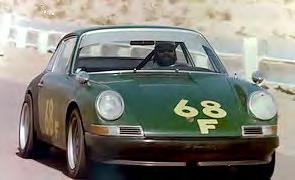
Holtville c. 1975
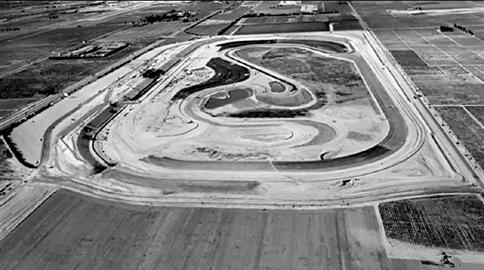
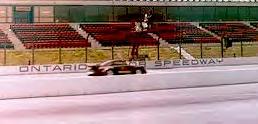
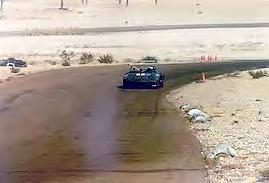
that transition at close to full throttle was to say the least, THRILLING. We didn’t get to brake down like we do at Auto Club for turn 3, it was a very careful tip-toe off the banking. Ontario was quite well known for Cal Jam 1 and 2, which drew a quarter of a million attendees to the grass infield for these Ontario Motor Speedway infield giant rock concerts. I actually attended Cal Jam 2, https://youtu.be/aL4H_vof8aE and forgive me for saying I wasted a lot of time trying to get close to the stage to see the girls from Heart. The infield was a mile long. Ontario was one of the finest Motor Speedways you can imagine, and was a victim of poor management. It closed and later replaced by Auto Club Speedway less than 2 miles away and 15 years later. See if you can explain that?
Let’s move on to Phoenix International Raceway. Phoenix was a normal stop for us, usually in February or November. It featured a clockwise course that used the oval front straight away and Nascar turns 4 and 3 which were our 1 and 2.
Halfway down the back straight away you took a left up the mountain and around the hill and off into the desert amidst some 5th gear esses, with no run off that did not involve Saguaros or boulders. At the end of those esses, we had a hard right hander, that missing involved a drop into a dry riverbed, and then another right hander onto a 5000 ft straight away. Our annual John Deere award winner was usually crowned there at the transition from that 5,000 foot straight away back to the infield. I could name Esses at Phoenix names, but I won’t.
Las Vegas was a 9 turn road course that at that time was at least 10 miles from the nearest enterprise of any kind, and would remind people of nothing so much as the Streets of Willow, again with epic trips out into the desert when missing corners. Some of that track is still used on the outside course at Las Vegas Motor
Speedway.
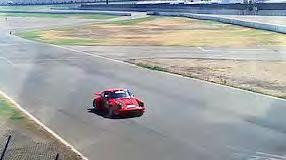
Orange County Raceway, also home to the famous drag strip which was a relatively short medium speed road course, something like ½ of Chuckwalla although surrounded by green grass and orange groves at the time. It was a nice, cool, close event that got us through the summer months without losing our minds. Not far from Dwain Dement’s
Las Vegas c. 1977 facility off the 405. Let me recommend a few other clips out of old movies that show some of this history. In the movie “On the Beach” you can find Fred Astaire racing a Jaguar counter clockwise on what quite possibly was the old Paramount Ranch course, although some claim it was Riverside and run backwards for the benefit of the lighting https://youtu.be/X2KkbHxo6po . In the old Disney movie “The Love Bug”, there are quite a few scenes involving Willow Springs before there were buildings https://youtu.be/evvLZvl1P0w . Last but not least, Lee Majors “The Last Chase” https://youtu.be/X0o-kedGdxk featured a 917 trying to outrun a fighter jet flown by Burgess Meredith, in a dystopian future time where the internal combustion engine had been banned. Sound familiar? Lastly, Road and Track used that movie to do a funny story where they got Otis to bring out the 917-30, race it down March Air Force Base runway, measuring the acceleration difference between the 917-30 and a fighter jet of that time. All but one of the road courses (Willow Springs) that we ran in 1973 are now gone, victims of rising real estate prices and/or poor management. The potential loss of Auto Club leads me to speculate where we will be 10 years from now. Tracks have changed from the very high speed, dangerous courses of the 50s, 60s and 70s into more technical, lower speed venues where getting flat out in high gear is very rare. The tracks we compete on now are mostly privately held, or club based. Who knows what the future holds? I do miss the high speed thrill ride of places like Riverside and Phoenix International. I hope someone builds a new course that can take us back to that. Next month, we will feature an interview with “The Legend”, Michael Hammond. Until then, see you In the Rearview Mirror… Don

Buyer and Seller of Collectible Porsches
Anders Hainer / anders@evamotorsllc.com / 818-351-5172
EvaMotorsLLC.com
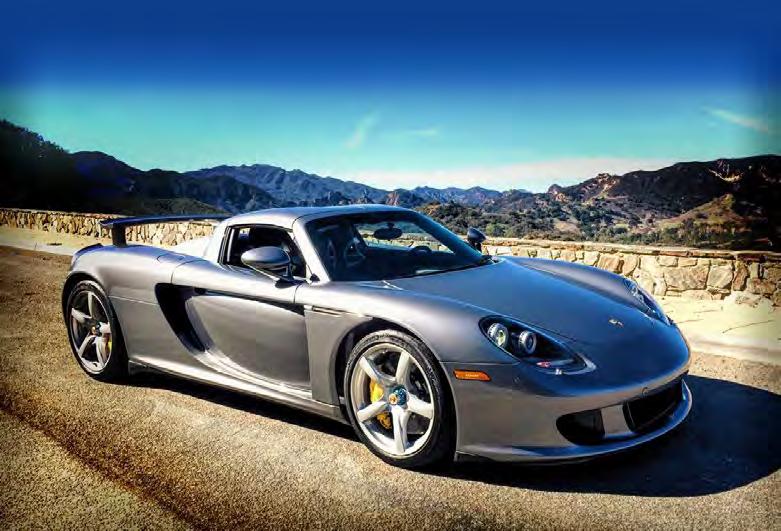
Thanks to all ourfriendsat POC foraterrific year of club racing, friendship,andmemories. We look forward toa fun, fastfuture together.







